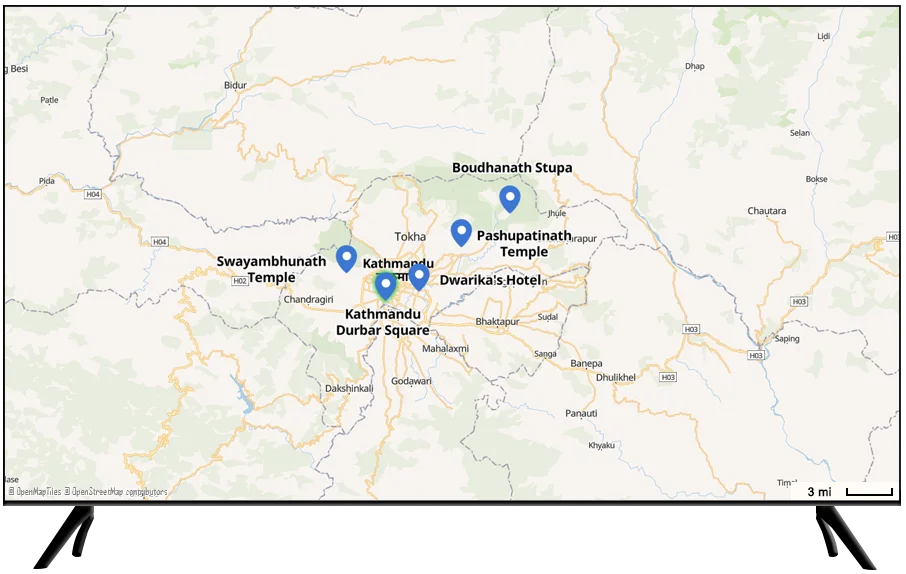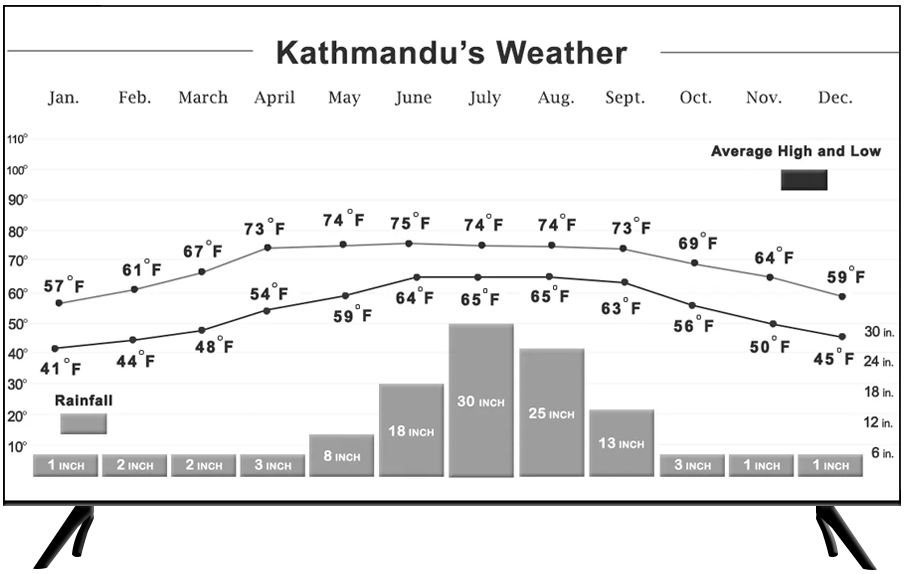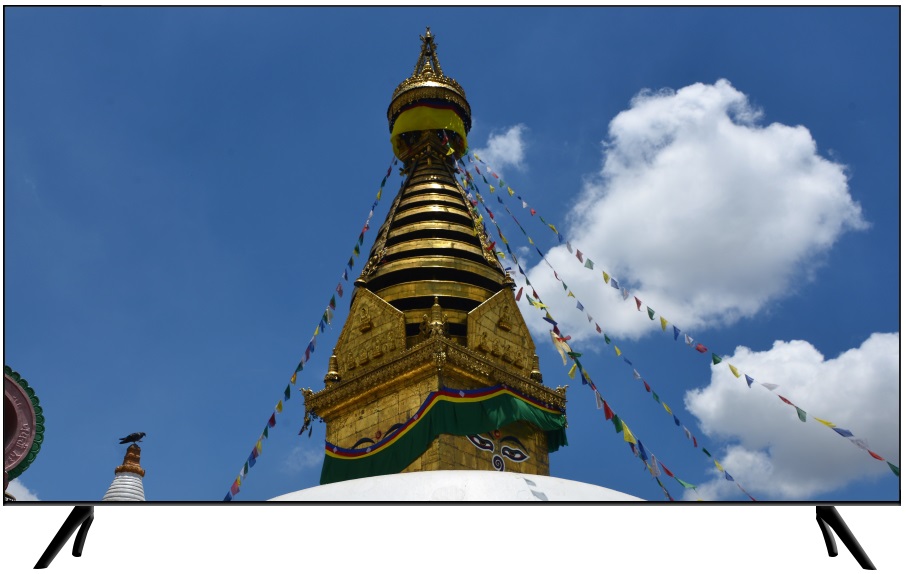


Day 5. Kathmandu
Overnight – Dwarika's Hotel
Weather permitting, you will experience the Everest flight this morning with private assisted transfers between the lodge and the airport. If weather conditions result in the flight getting cancelled, it can be substituted for the following day.
This morning you will proceed very near your lodge for a tour of Pashupatinath Temple, a UNESCO World Heritage Site and one of the most sacred Hindu shrines in the world. Instead of a 5-minute drive, you can select a 15-minute walk if you are so inclined. Originally built around 2400 years ago, the spectacular temple was reconstructed by a Nepalese king in the 15th century after the original wooden structure was (purportedly) consumed by termites. A lesser-known fact among western visitors is that Nepal’s natives are primarily Hindus (over 80%), and Pashupatinath’s surrounding area is dotted with ancient Hindu shrines and ashrams, as well as a steady stream of pilgrims and worshippers.
Nepal’s holy river Bagmati flows through here and its banks are constant witnesses to Hindu ceremonies for the dead and the living. There is a cremation area where pyres are always present, and your Guide will ask you for a mindful approach in these areas. The main temple and most of the surrounding shrines received no damage in the 2015 earthquake.
Next is the Swayambhunath Temple and Pagoda, Kathmandu’s signature monument, with the expressive eyes and nose painted on all four sides of its unique crown that are visible from almost all the Kathmandu Valley. With a history that may go back as far as 2500 years, this ancient complex is obviously a UNESCO World Heritage Site and is built on a hilltop.
Devout Nepalese walk up the hill from the base (365 steps), but most of our guests prefer to drive up almost all the way up and then use the few steps on the other side of the hill. Although a couple of the smaller surrounding monuments were damaged during the 2015 earthquake, the main structure still stands, along with other smaller shrines and monasteries surrounding it.
After breaking for lunch, you are driven to the Kathmandu Durbar Square, another UNESCO World Heritage Site. A few of the ancient monuments here were damaged during the earthquake, but much of it remains intact. The monuments in the Square were built between the 12th and 18th centuries, and this is where, even today, most of the state ceremonies are performed. Start with a visit to the beautiful 17th Century three-story building called Kumari Ghar, which means the abode of the Living Goddess. Guests may want to spend a couple of minutes researching this ancient tradition before their visit. If you are fortunate, you may be graced with the anointed child’s appearance in an upstairs window. You will then explore the ancient square and its many monuments, with the opportunity to pose in front of Kal Bhairav, an ancient and impressive stone relief of Lord Shiva in one of his most fearsome manifestations.
After the Stupa you will enjoy a walk in Thamel, the main bazaar area of Kathmandu. Thamel is also where a lot of the inexpensive hostels and other budget lodging options are located, and its colorful alleys are always abuzz with activity. Locals and backpackers flock to this area to shop for a vast range of products, from daily requirements to souvenirs, from clothing to footwear to toys. There are also a large number of dining and street food options for the backpackers, ranging from local Nepalese delicacies to western fare.
Weather permitting, you will experience the Everest flight this morning with private assisted transfers between the lodge and the airport. If weather conditions result in the flight getting cancelled, it can be substituted for the following day.
This morning you will proceed very near your lodge for a tour of Pashupatinath Temple, a UNESCO World Heritage Site and one of the most sacred Hindu shrines in the world. Instead of a 5-minute drive, you can select a 15-minute walk if you are so inclined. Originally built around 2400 years ago, the spectacular temple was reconstructed by a Nepalese king in the 15th century after the original wooden structure was (purportedly) consumed by termites. A lesser-known fact among western visitors is that Nepal’s natives are primarily Hindus (over 80%), and Pashupatinath’s surrounding area is dotted with ancient Hindu shrines and ashrams, as well as a steady stream of pilgrims and worshippers.
Nepal’s holy river Bagmati flows through here and its banks are constant witnesses to Hindu ceremonies for the dead and the living. There is a cremation area where pyres are always present, and your Guide will ask you for a mindful approach in these areas. The main temple and most of the surrounding shrines received no damage in the 2015 earthquake.
Next is the Swayambhunath Temple and Pagoda, Kathmandu’s signature monument, with the expressive eyes and nose painted on all four sides of its unique crown that are visible from almost all the Kathmandu Valley. With a history that may go back as far as 2500 years, this ancient complex is obviously a UNESCO World Heritage Site and is built on a hilltop.
Devout Nepalese walk up the hill from the base (365 steps), but most of our guests prefer to drive up almost all the way up and then use the few steps on the other side of the hill. Although a couple of the smaller surrounding monuments were damaged during the 2015 earthquake, the main structure still stands, along with other smaller shrines and monasteries surrounding it.
After breaking for lunch, you are driven to the Kathmandu Durbar Square, another UNESCO World Heritage Site. A few of the ancient monuments here were damaged during the earthquake, but much of it remains intact. The monuments in the Square were built between the 12th and 18th centuries, and this is where, even today, most of the state ceremonies are performed. Start with a visit to the beautiful 17th Century three-story building called Kumari Ghar, which means the abode of the Living Goddess. Guests may want to spend a couple of minutes researching this ancient tradition before their visit. If you are fortunate, you may be graced with the anointed child’s appearance in an upstairs window. You will then explore the ancient square and its many monuments, with the opportunity to pose in front of Kal Bhairav, an ancient and impressive stone relief of Lord Shiva in one of his most fearsome manifestations.
After the Stupa you will enjoy a walk in Thamel, the main bazaar area of Kathmandu. Thamel is also where a lot of the inexpensive hostels and other budget lodging options are located, and its colorful alleys are always abuzz with activity. Locals and backpackers flock to this area to shop for a vast range of products, from daily requirements to souvenirs, from clothing to footwear to toys. There are also a large number of dining and street food options for the backpackers, ranging from local Nepalese delicacies to western fare.

